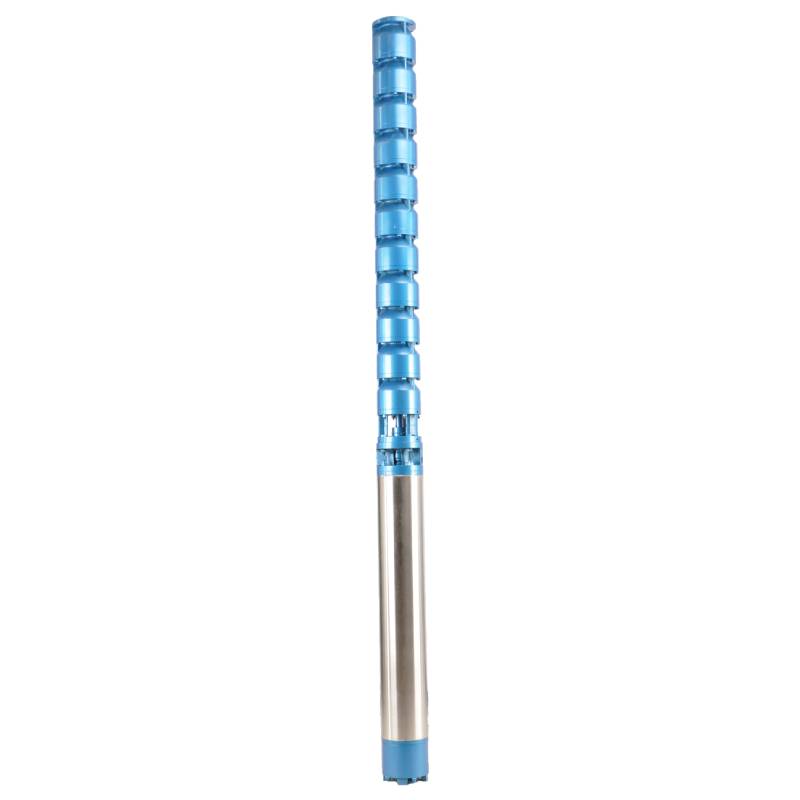Dec . 25, 2024 10:09 Back to list
Testing a Submersible Pump Using a Multimeter for Reliable Performance Evaluation
How to Test a Submersible Pump with a Multimeter
Submersible pumps are widely used in various applications, primarily for moving liquids from one place to another. They are designed to operate underwater and are commonly found in wells, basements, and sewage systems. However, like any mechanical device, they can fail over time due to wear and tear, electrical issues, or other factors. To diagnose problems effectively, it's essential to understand how to test a submersible pump using a multimeter. In this article, we will guide you through the process step-by-step.
Understanding the Components
Before diving into testing procedures, it's crucial to understand the components of a submersible pump. These typically include
1. Motor The electric motor powers the pump. 2. Impeller This component moves the fluid. 3. Seals These prevent leaks and protect the motor from moisture. 4. Power Supply Provides electricity to the pump. 5. Control Box This may include overload protection and other electrical components.
Tools Required
1. Multimeter A digital multimeter will allow you to measure voltage, resistance, and continuity. 2. Screwdriver To access internal components, you might need a screwdriver. 3. Safety Gear Gloves and safety goggles for protection.
Safety Precautions
Before starting, always prioritize safety. Disconnect power to the pump to avoid electric shock. Ensure you are working in a dry environment and consider using rubber-soled shoes.
how to test a submersible pump with a multimeter

Testing Procedure
1. Visual Inspection Start with a comprehensive visual examination of the pump. Look for signs of wear, corrosion, or physical damage. Check the power cord for any visible cuts or frays.
2. Testing the Power Supply - Set your multimeter to the AC voltage setting. - Insert the probes into the outlet where the pump is plugged in. - Check if the correct voltage is present. If it's significantly lower than the pump's rated voltage, there may be an issue with the electrical supply.
3. Testing for Continuity - Turn off the power to the pump completely. - Disconnect the power cable from the pump. - Set the multimeter to the continuity setting (usually represented by a sound wave symbol). - Place one probe on one of the terminals of the pump's power cord and the other probe on the corresponding terminal of the motor. - A continuous beep indicates good continuity. If there’s no sound, the motor or wiring may be faulty.
4. Measuring Resistance - Keep the power off and the motor disconnected. - Switch your multimeter to the resistance (ohm) setting. - Measure the resistance between the motor terminals. Refer to the manufacturer's specifications for the acceptable resistance range. A reading outside this range may indicate a burnt-out motor winding.
5. Testing Impeller and Seals - While the power is off, inspect the impeller and seals. Make sure they are free from debris and damage. A blocked impeller can cause the pump to overheat and fail. - Although not directly tested with a multimeter, ensuring mechanical integrity is vital for the pump's performance.
6. Reconnecting and Final Checks - Once you have completed your testing, reconnect the power supply. - Turn the pump on and observe its operation. Listen for unusual noises or vibrations that may indicate issues.
Conclusion
Testing a submersible pump with a multimeter is a straightforward process that can save time and prevent costly repairs. By following the steps outlined above, you can effectively diagnose many common issues associated with submersible pumps. If you find persistent problems even after testing, it may be time to consult a professional. Regular maintenance and testing not only extend the life of the pump but also ensure its efficiency and reliability in transporting liquids. Always work safely, and when in doubt, seek expert advice.
-
Submersible Water Pump: The Efficient 'Power Pioneer' of the Underwater World
NewsJul.01,2025
-
Submersible Pond Pump: The Hidden Guardian of Water Landscape Ecology
NewsJul.01,2025
-
Stainless Well Pump: A Reliable and Durable Pumping Main Force
NewsJul.01,2025
-
Stainless Steel Submersible Pump: An Efficient and Versatile Tool for Underwater Operations
NewsJul.01,2025
-
Deep Well Submersible Pump: An Efficient 'Sucker' of Groundwater Sources
NewsJul.01,2025
-
Deep Water Well Pump: An Efficient 'Sucker' of Groundwater Sources
NewsJul.01,2025
-
 Submersible Water Pump: The Efficient 'Power Pioneer' of the Underwater WorldIn the field of hydraulic equipment, the Submersible Water Pump has become the core equipment for underwater operations and water resource transportation due to its unique design and excellent performance.Detail
Submersible Water Pump: The Efficient 'Power Pioneer' of the Underwater WorldIn the field of hydraulic equipment, the Submersible Water Pump has become the core equipment for underwater operations and water resource transportation due to its unique design and excellent performance.Detail -
 Submersible Pond Pump: The Hidden Guardian of Water Landscape EcologyIn courtyard landscapes, ecological ponds, and even small-scale water conservancy projects, there is a silent yet indispensable equipment - the Submersible Pond Pump.Detail
Submersible Pond Pump: The Hidden Guardian of Water Landscape EcologyIn courtyard landscapes, ecological ponds, and even small-scale water conservancy projects, there is a silent yet indispensable equipment - the Submersible Pond Pump.Detail -
 Stainless Well Pump: A Reliable and Durable Pumping Main ForceIn the field of water resource transportation, Stainless Well Pump has become the core equipment for various pumping scenarios with its excellent performance and reliable quality.Detail
Stainless Well Pump: A Reliable and Durable Pumping Main ForceIn the field of water resource transportation, Stainless Well Pump has become the core equipment for various pumping scenarios with its excellent performance and reliable quality.Detail
